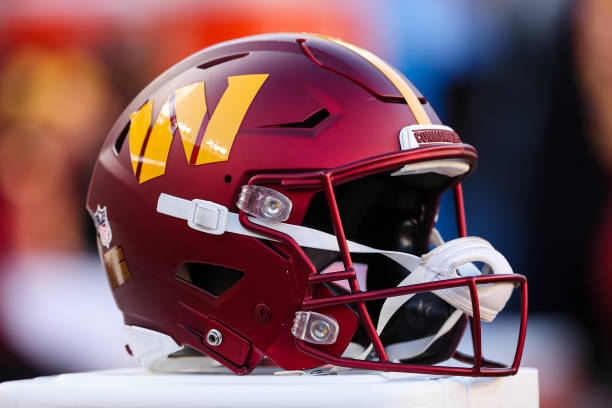The Washington Commanders are facing growing pressure to consider trading their former first-round cornerback, whose recent decline in the depth chart has sparked significant debate among fans and analysts. Once regarded as a promising cornerstone of the team’s secondary, the cornerback’s drop in prominence has raised questions about his future with the franchise and whether a trade might be in the best interest of both parties.
The cornerback in question was drafted in the first round with high expectations and substantial potential. Initially, he was seen as a future star for the Commanders, with his skills and athleticism setting the stage for a successful NFL career. However, recent developments have led to a noticeable decline in his role within the team.
A combination of factors, including injuries, inconsistent performance, and the emergence of younger players, has contributed to his fall down the depth chart. What was once a promising career trajectory has now turned into a situation where he finds himself on the fringes of the Commanders’ defensive plans.
The Commanders’ depth chart adjustments reflect the shifting dynamics within the team. The cornerback’s reduced role has opened opportunities for other players, including recent draft picks and free-agent acquisitions, to step into more prominent positions. These changes have highlighted the cornerback’s diminishing influence and the team’s evolving strategy in the defensive backfield.
The depth chart shift is not just a matter of personal performance but also a broader reflection of the team’s changing priorities and needs. The emergence of new talent and the need for immediate contributions have made the cornerback’s current status a topic of intense scrutiny.
The decline in the cornerback’s depth chart position has inevitably led to increased speculation about a potential trade. Analysts and fans are debating whether it would be beneficial for both the Commanders and the cornerback to part ways. The trade discussions are fueled by the idea that a change of scenery might revitalize the player’s career and provide the Commanders with valuable assets in return.
The pressure to trade the cornerback is driven by several factors:
1. Performance and Value: With the cornerback’s role diminishing, the Commanders may view a trade as an opportunity to obtain assets that could better align with their current needs and future plans.
2. Cap Space and Contract: The cornerback’s contract may be a factor in the trade discussions. Offloading his contract could free up cap space for the Commanders, allowing them to invest in other areas of need.
3. Team Dynamics: The cornerback’s presence on the roster, despite his reduced role, may impact team dynamics. A trade could allow for a more harmonious environment and give the cornerback a chance to thrive in a new setting.
Several scenarios are being discussed regarding a potential trade. Teams looking to bolster their secondary might view the cornerback as a valuable asset, particularly if they believe a change of environment could unlock his previous potential. Trade proposals could involve various compensation packages, including draft picks, players, or a combination of both.
For the Commanders, the key will be finding a trade partner willing to meet their demands and offer a return that aligns with their strategic goals. The team’s front office will need to carefully evaluate potential offers and make a decision that balances immediate needs with long-term planning.
A trade could have significant implications for the cornerback’s career. A new team might provide him with a fresh start and the opportunity to play a more central role in the defense. Success in a new environment could help him regain his confidence and restore his standing as a valuable NFL player.
Conversely, the pressure of a trade could also bring its own set of challenges. Adjusting to a new team and system requires adaptability and resilience, and the cornerback will need to navigate these changes effectively to make the most of the opportunity.
The debate over the potential trade has generated substantial reactions from fans and analysts. Some view the trade as a necessary step for the Commanders to address their current needs and capitalize on the cornerback’s remaining value. Others argue that the cornerback still possesses significant potential and that trading him might be premature.
Analysts are weighing the potential benefits and drawbacks of the trade, considering factors such as the cornerback’s performance history, the Commanders’ needs, and the broader implications for both parties. Fans are eager to see how the situation unfolds and what impact the potential trade might have on the team’s future.
As the Commanders navigate the decision-making process regarding their former first-round cornerback, the situation remains fluid. The team will need to carefully assess its options and make a choice that aligns with its strategic goals.
The potential trade presents an opportunity for both the Commanders and the cornerback to move forward in new directions. How the situation develops will be closely watched by fans, analysts, and the broader NFL community, with the outcomes likely to have lasting implications for both the team and the player involved.
